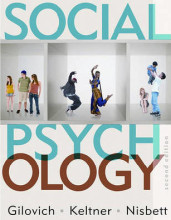Persuasion - Functions of Attitudes & Persuasion and Attitude Change
7 important questions on Persuasion - Functions of Attitudes & Persuasion and Attitude Change
Two-process models of persuasion
Heuristic-systematic model
Elaboration likelihood model
>>Both models argue essentially the same thing: persuasion can work by changing what we know and believe or by changing how we feel
Central (systematic) route
A persuasive route wherein people think carefully and deliberately about the content of a message, attending to its logic, cogency, and arguments, as well as to related evidence and principles.
Change attitudes through process of reasoning
>>Provide good reasoning and high-quality arguments
Peripheral (heuristic) route
A persuasive route wherein people attend to relativeely simple, superficial cues related to the message or the expertise or attractiveness of the communicator.
Change attitudes through feelings and superficial associations
>Source characteristics
>> How attractive, funny, famous, or expert the communicator seems
>Number or length of arguments
>>A lot of arguments may be superficially convincing even if they are low quality
>Group consensus
>>If other people seem to agree, we may be convinced without really considering the issue ourselves
- Higher grades + faster learning
- Never study anything twice
- 100% sure, 100% understanding
Source characteristics = characteristics of the person who delivers the message, including the person's..
1) Attractiveness
Attractive spokespeople are more persuasive, even for topics completely unrelated to attractiveness.
Effects of attractiveness are through the peripheral route: attractive people are rated more favorably, and those favorable feelings become associated with the message
2) Credibility
People who are seen as knowledgeable and trustworthy are more persuasive
However, non-credible sources can change attitudes through the sleeper effect
>>Although a message may not be believed originally, over time the message may be remembered without remembering that it came from an untrustworthy source
3) Expertise
Message characteristics = aspects of the message itself, including the quality of the evidence and the explicitness of its conclusions.
1) High-quality messages: Explain desirable yet novel outcomes of acting in response to the message
2) Vivid information: Vivid information can be more persuasive than statistical facts; Identifiable victim effect
3) Fear-based persuasion:
Identifiable victim effect
The tendency to be more moved by the plight of a single, vivid individual than by a more abstract aggregate of individuals
Reciever characteristics = characteristics of the person who recieves the message, including age, mood, personality, and motivation to attend to the message
1) Personality > need for cognition
Drive to think deeply about judgments.
People high in need for cognition are more persuaded by central route messages than by peripheral route messages
2) Mood
Messages are more persuasive when they match the mood of the receiver
>>Optimistic messages work best on happy people
3) Age
Younger people are more persuadable than older people
>>Older people may have strong and long-held attitudes
Children may be most vulnerable to persuasion attempts
The question on the page originate from the summary of the following study material:
- A unique study and practice tool
- Never study anything twice again
- Get the grades you hope for
- 100% sure, 100% understanding
































